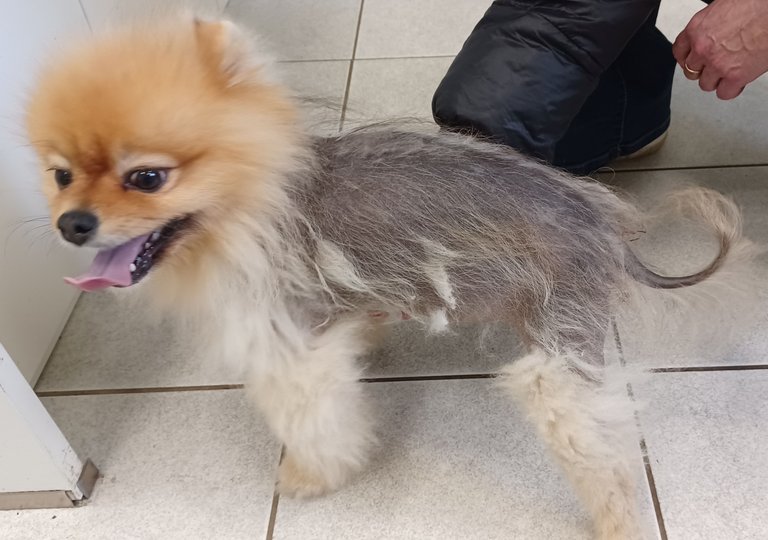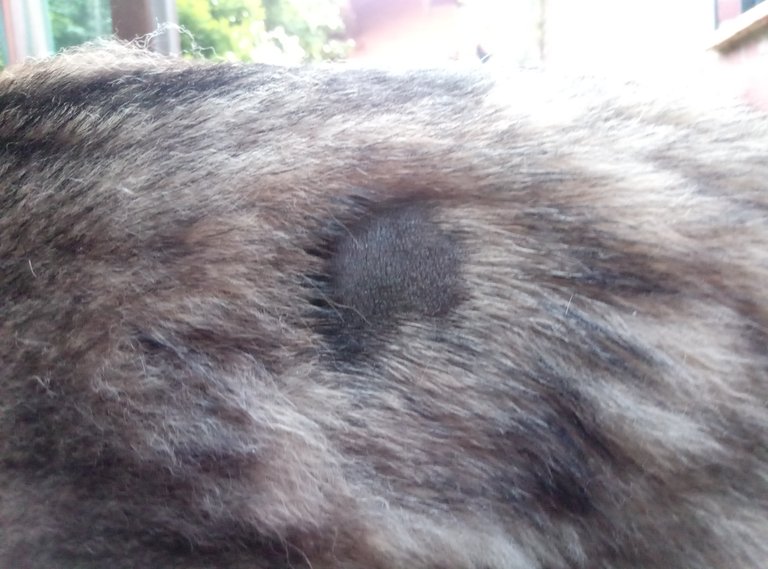Alopecia is one phenomenon that has not yet been fully understood in humans or nonhuman primates, it could happen as a result of a genetic or congenital disorder, or it could also spring up at some point during the lifetime of the animal.

Image source
Hair loss affecting animals can be divided into inflammatory and noninflammatory in terms of types, the patterns of hair loss can also be categorized into various ways, with several scoring systems being developed. These systems are focused on hair volume, which is the number of hairs based on unit area, or distribution which is referred to as the size and location of bald patches, oftentimes, it is the combination of both factors.
The hair follicle has a unique ability to regenerate itself all through the entire existence of an organism. Hair growth happens in different stages, beginning with the anagen or better-called growth phase. During this phase, cell division in the matrix of the hair bulb produces keratinocytes, which further form the various layers of the individual hair shaft.
Melanocytes found in the hair bulb provide the keratinocytes with the required pigment. When the hair gets to a certain length, which varies based on the body region, it enters into the catagen better known as the phase of degradation, when the process of cell division and pigmentation ceases.
During the telogen phase, a new hair follicle would appear below the original follicle, where the hair shaft will then grow back to its original form and the previous hair shafts shed. It remains unclear, however, whether the hair is lost as a result of the new hair shaft's upward trajectory or whether there is a separate active shedding stage.

Image source
Alopecia in itself is the partial or complete absence of hairs in areas where it should normally be present. Hereditary or congenital alopecia has been seen in cows, dogs, cats, pigs, and horses. Hairless breeds of rats, cats, mice, and dogs have been bred and developed for personal and research purposes.
Congenital type of alopecia may either be inherited or not, often caused by the lack of development of hair follicles and is apparent during or shortly after birth. Acquired alopecia contributes significantly to other causes of hair loss, in this case, the animal is born with a normal hair coat or has had normal hair follicles at one time.
Inflammatory-acquired alopecia is the most common cause of alopecia. Acquired alopecia develops due to the presence of a disease that destroys the hair follicle or shaft, interferes with the growth of hair or wool, or causes discomfort to the animal.
Diseases that can directly cause damage or destruction to the hair shaft or hair follicle are in the form of skin diseases, bacteria, demodicosis, severe inflammatory diseases of the dermis, dermatophytosis, and traumatic episodes. Diseases that can directly inhibit or slow down the growth of hair follicles include; nutritional deficiencies, hyperadrenocorticism, hypothyroidism, and excessive estrogen production or administration.
A temporary case of alopecia can happen in sheep, horses, and dogs and can occur during pregnancy, lactation, or several weeks after a serious illness or fever.
Clinical signs of acquired hair loss vary and are usually influenced by underlying causes, the patterns of hair loss may be multifocal, focal, symmetric, or generalized.
A blood test can as well be used to diagnose certain immune system conditions, thyroid disorders, hormone abnormalities, Diabetes mellitus, and Cushing's disease. In a situation where cancer is suspected, a sample of the affected area may be sent to the laboratory for further investigation.
Symptoms of hair loss in dogs come with a variety of patterns depending on the underlying cause; foul odor, itchiness, red inflamed skin around the area of hair loss, oozing moisture or bleeding around the area of hair loss, overall thinning of the hair, hair loss around the mouth and eyes, symmetrical patterns of hair loss in the same place on both sides of the body.
Depending on the result obtained from the diagnosis, there are varieties of treatments made available for hair loss in dogs, we have;
Antifungals which could be used for the treatment of yeast and ringworm infections.
Steroids which may be used for the treatment of certain skin conditions.
Behavioural medications that can treat nervous chewing or licking.
Antibiotics can help treat bacterial infections.
Medicated shampoos or dips that can treat cases of manage.
Immunosuppressive drugs may be required for environmental allergy control, most often a lifelong treatment will be required.
Vitamin A, E, and fish oil supplements may be recommended for pets that have certain skin conditions.
An Elizabethan collar may be required to prevent the pet from itching or licking the affected area until healign is restored.
If hair loss happens due to chemotherapy, it would easily go away once the sessions are completed, but hair loss may remain a life lifelong thing when it is caused by scarring, genetics, callouses, or pressure sores. However, in most cases, hair loss in pets can be managed/resolved.
References
ncbi.nlm.nih.gov/pmc/articles/PMC2703143
[www.msdvetmanual.com/integumentary-system/integumentary](https://www.msdvetmanual.com/integumentary-system/integumentary-
